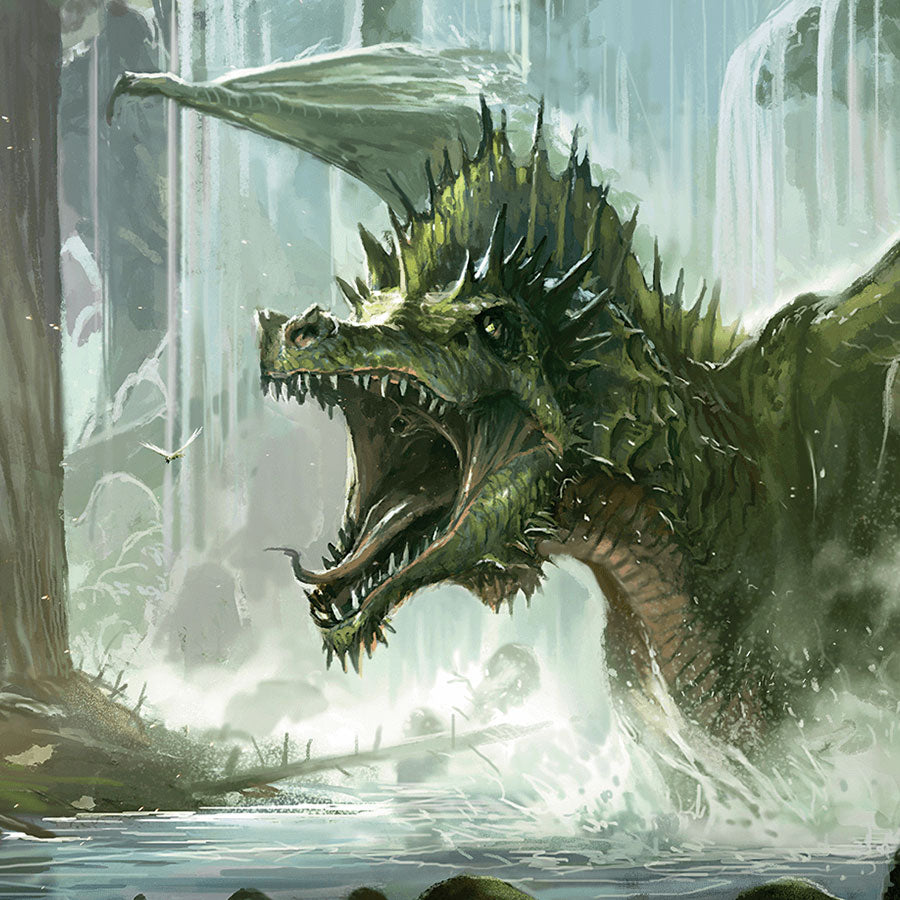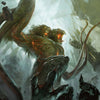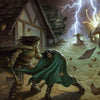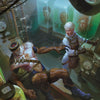How to Prep a D&D Game in 30 Minutes Flat

Written by Luke Hart
Some game masters LOVE prepping for their games, and they will immerse themselves for HOURS in the process. But, let’s pretend that’s not you. Maybe you don’t particularly enjoy game prep, or perhaps you were voluntold to be the game master, or you’re just a busy adult with a spouse, kids, and a nasty video-game habit—whichever one is you, your real goal with game prep is to get it done and over with. Sure, you don’t want your game to suck, but the less time you can spend prepping, the better.
So, today we’re talking about how you the game master can prep a tabletop roleplaying game in about 30 minutes. This speed prep system will probably work for almost any game system out there, from D&D to Pathfinder to Shadowdark to DC20 to Call of Cthulhu to whatever.
Watch or listen to this article by clicking the video below.
Assumptions
This speed prep system makes a few assumptions.
First, we assume that you are creating a HOMEBREW adventure. If you’re running an adventure module such as Curse of Strahd, this article probably won’t help you much. Prepping for a pre-made adventure is a different use case. However, if that’s what you REALLY want to know, I already have a video about that: Prep a Pre-Written D&D Adventure in Under an Hour!
Second, if you’re running your game online and you also have to set up the map and tokens in the VTT of your choice, that’s going to tack on extra time. I’m sorry, but that’s a price of playing online.
Third, you’ll prep the things that are NECESSARY before the game and then IMPROVISE everything else. Don’t worry, it won’t be that bad. As long as you prep what you NEED, improving the rest will just sort of take care of itself.
Fourth, design CONCEPTS not DETAILS. The details you can usually improvise during a game, as long as you know the high-level concepts.
Step 1: Get a Map
And the key to getting a map is finding a PRE-MADE map that you can use for your adventure. If you need to draw out your own map, that could take 30 minutes all by itself.
So, grab a pre-made map from a site like Dyson Logos which has tons of FREE old school dungeon maps you can use in your games, or from CzePeku, or from my own collection of Map Packs on thedmlair.com. I’m sure Google searches will help you, too. A random map generator will work, too.
Now, how big should your map be? Aim for about 10 rooms or areas for now. This game prep system WILL work for larger maps—and I’ll talk about that toward the end of the article—but a smaller map makes your life easier, and that’s really why you’re here, isn’t it?
Remember, you’re not looking for a PERFECT map; you’re looking for a map that will WORK.
Actually, this is probably worth an aside. If you want to get your game prep done in 30 minutes, you’d best BANISH the idea of perfection from your brain RIGHT NOW. Never forget: perfection is the enemy of done. If you want perfect, it’s going to take you a good long time.
Step 2: Label the Areas
Take your map and label all the areas out. This is the kitchens, the dining room, the barracks, the jail cells, the chapel, and so on and so forth. When you know what the PURPOSE of a room is, you can more easily improvise descriptions and details during the game—which is exactly what you’ll be doing.
Step 3: Create a List of Encounters
You probably only need three encounters to get through one game session, but I would create FIVE, just in case. I suggest creating THREE combat encounters, and TWO social interaction encounters. One of the encounters should be fairly easy, the other somewhat challenging, and the last could be your boss fight. Then your two social interactions are designed to be pure talky-talky encounters.
Another aside: remember, that monsters should RARELY just attack. Most creatures, except the unintelligent or brazenly aggressive, will seek to CONVERSE with characters first. So, even though we say “combat encounters,” they will probably start off as a social interaction.
Important point: DO NOT KEY THE ENCOUNTERS TO THE AREAS. It doesn’t matter which encounters happen where. Just make a list. During the game, you’ll place the encounters where you need them to be, as determined by the needs of the moment, or random rolls if you really want.
Step 4: Create a List of Discoveries
Make a list of three to five secrets or cool things characters might DISCOVER as they adventure. This might be LORE about the dungeon or a monster in it, a secret passage, or a stone that sings. Maybe you flesh out details for each, maybe you don’t and just make things up on the fly.
I would also include a trap or two on the list, depending on how prevalent they are in your game.
And, similar to the list of encounters, you do NOT key these discoveries to areas. A list is all you need. During the game you’ll use them where you need them.
Step 5: Create a Loot List
Make a list of about FIVE pieces of loot or treasure that characters might find. These might be things that monsters are carrying on their persons, or things that are hidden in the dungeon, in chests, in a cabinet—whatever. All you need is the list. You’ll determine where they are found as you run the game.
And that’s all you need: a map, labeled areas, a list of encounters, a list of discoveries, and a list of loot.
Running the Game
Now that you have all these things, this is how you run the game.
When the players enter an area on the map, you pull something from your list of encounters or discoveries or loot. That’s the thing that will be in that room. Now, you can double things up. There’s an encounter, and the monsters have loot on them. Or there’s both a discovery and some loot in a chest. I would NOT go for a trifecta though. One thing is sufficient; two is good, as well; three is overkill. SPACE YOUR CONTENT OUT.
Important Point: No room should be “empty.” Every area should have a game purpose; there should be SOMETHING in that room for players to do, whether it’s an encounter or a discovery or finding some sweet sweet loot.
So, your players’ characters are going into an area, and you’ve quickly pulled something from your lists. Now you describe the area, along with the thing from your list—unless it’s hidden and must be searched for, of course—and then you let your players engage with that area and run the game as you normally would.
That’s it. That’s how you run an area. When your players move to the next area, you rinse and repeat. You basically run the entire adventure this way, pulling from your lists and improvising as needed.
If each of your three lists has FIVE items on it, I would expect that to last two game sessions, maybe three if your players set a slower pace.
Adapting This System for Large Maps and Massive Dungeons
The reason this system can EASILY be adapted for large maps is that you don’t KEY anything to the areas on the map. Since you’re pulling things from lists as the adventure unfolds, all you really need to run adventures on larger maps are LONGER LISTS.
Get Loads of 5e Adventures and Resources for Your Games!
As a new dungeon master, I was overwhelmed with everything I needed to do. Learn the rules, create the adventures, run the game, handle problem players—it was A LOT! And even as a veteran DM, it’s still a lot. You might even feel that way yourself.
If you’re looking for loads of 5e adventures that you can prep in under 30 minutes or elements such as traps, puzzles, and encounters that you can drag and drop into your game at a moment’s notice, we have you covered!
With Lairs & Legends and Loot & Lore, you’ll get over 700 pages of 5e resources:
- Twenty-nine 5e adventures spanning levels 1 to 15 and designed for groups of 4 to 6 players.
- Over 100 new creatures from CR 0 to CR 24.
- Adventure Ideas
- Encounters with Full-Color and Blackline Digital Maps
- Patrons & Factions
- Magic Items
- NPCs
- Puzzles
- Random Encounter Tables
- Random Tables
- Spells
- Subclasses
- Traps
- Villains
Everything is designed to be EASY TO USE and QUICK TO PREP for your game. Our goal is to make game masters’ lives easier, not more complex!
Don’t spend another moment frustrated and overwhelmed as a GM. Pick up the Lairs & Legends Ultimate Bundle today and find out how much easier being a GM can be!
-
Posted in
Game Master How-To Articles







